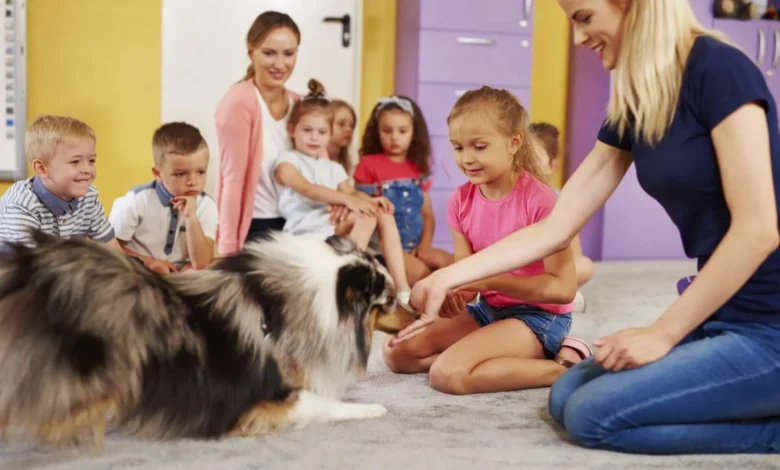Applied Behavior Analysis: Boosting Communication and Social Skills in Children

Applied Behavior Analysis (ABA) is rooted in decades of research in behavioral psychology. It emphasizes observable behavior changes through structured and scientifically validated interventions. It’s a comprehensive approach incorporating direct and indirect methods to understand behavioral motivations. This understanding allows practitioners to design targeted interventions that help foster desirable behaviors while diminishing those that pose challenges. ABA is more than a mere technique; it is a systematic approach that invites participants to observe, analyze, and adjust behaviors that align with their personal goals and societal norms.
Several programs are committed to providing individualized plans that meet the unique needs of each child. They focus on crafting environments where children feel supported and motivated to engage in meaningful learning experiences. ABA’s adaptability means that its strategies can be tailored to various settings, from home to school, ensuring consistent and cohesive support across different environments.
Communication Skills Development
Developing communication skills is a central focus of ABA, as it lays the groundwork for successful social interaction and personal expression. ABA employs techniques such as Functional Communication Training, which is designed to replace challenging behaviors with more appropriate communicative actions. These interventions often start with non-verbal communication techniques, like images or gestures, that can later transition into verbal communication as confidence and skills grow.
The transformative power of ABA can be seen in how it empowers children to express their thoughts, desires, and concerns effectively. This empowerment is crucial as it reduces frustration and increases the quality of interactions with peers and family members. Over time, children who participate in ABA tend to exhibit a greater understanding of verbal and non-verbal communication cues, which enhances their ability to forge positive relationships and partake in group activities with ease and joy. Programs like the ABA Therapy Services Program – Georgia – Brighter Strides are designed to support this development through structured, evidence-based strategies tailored to individual needs. Such programs contribute to meaningful long-term improvements in communication and social engagement for children across various developmental profiles.
Enhancing Social Interactions
Social skills are fundamental to a child’s development, impacting their ability to form friendships, work collaboratively, and engage in community activities. ABA helps children develop these skills by creating structured scenarios to practice interaction in a supportive setting. Techniques like video modeling, social stories, and peer pairing are frequently used to teach children the subtleties of social interaction, such as taking turns, maintaining eye contact, and recognizing social cues.
Enhanced social skills lead to better peer relationships and increase a child’s confidence in various social settings. Children learn to appreciate diversity, understand different perspectives, and develop empathy, crucial components of emotional intelligence.
Practical Strategies for Parents and Educators
- Consistent Routines: Establishing regular routines helps create a stable environment that is fundamental for learning. Routines minimize uncertainty, give children a sense of control, and help maintain focus.
- Visual Aids: Visual aids, such as charts or cards, are invaluable tools. They cater to children who thrive on visual learning and help clarify expectations and transitions, making complex ideas more tangible and understandable.
- Role-playing: Role-playing allows children to imitate real-life social interactions in a safe and controlled manner. It will enable them to rehearse various scenarios, such as greetings or asking for help, enhancing their confidence and competence when faced with similar situations.
By incorporating these strategies, parents and educators can create a nurturing environment that supports continuous growth and learning. These strategies are adaptable; they can be modified to suit individual needs, ensuring that every child has the tools they need to succeed.
Recent Research
Research consistently supports the efficacy of ABA in improving communication and social skills among children with various developmental challenges. Studies indicate that ABA interventions result in substantial gains in language acquisition and social skills when implemented consistently over time. According to research highlighted by resources such as research in applied behavioral sciences, children involved in ABA exhibit higher levels of engagement, adaptability, and problem-solving capabilities.
The scientific community recognizes ABA as a leading intervention due to its empirical basis and success in producing measurable changes in behavior. As more data accumulates, the strategies continue to evolve, incorporating new insights and findings that enhance the program’s overall effectiveness.
Real-Life Applications and Examples
There are innumerable success stories from families who have engaged in ABA therapy. Children who were once non-verbal have found their voices, and those who struggled with isolation have learned to form meaningful relationships. Parents often share how their children’s newfound abilities have transformed the family dynamic, introducing new opportunities for interaction and joy. The outcomes of ABA extend beyond educational achievements, impacting every aspect of the child’s life and the lives of those around them.
These stories highlight the personalized nature of ABA, as the interventions are tailored to the child’s current abilities and future potential. The changes observed are often described as life-changing, providing children with the skills they need to successfully navigate the complexities of daily life.
Answering Common Questions
Many parents and educators have questions about the logistics of ABA, including what to expect regarding duration, cost, and outcomes. On average, children begin to show progress relatively quickly; however, the best results typically derive from ongoing intervention spanning several months to years, depending on individual needs. Sessions are often integrated into a child’s daily life, making them practical and minimally disruptive.
The concern about cost is common, yet many families find that the long-term benefits to their child’s emotional and social well-being make the investment worthwhile. Funding options, such as insurance and grants, are increasingly available, making ABA accessible to more families who could benefit from its structured support.
Future Prospects of ABA
Technological advances hold exciting potential as we look to the future of ABA. Integrations with digital tools, such as virtual reality and interactive apps, show promise in enhancing the learning experience by providing immersive, engaging lessons that complement traditional ABA techniques. These technologies can create new ways for children to acquire skills, making learning more dynamic and interactive.
The continuous refinement of ABA practices aims to better meet the diverse needs of children worldwide. By staying at the forefront of research and innovation, ABA has the unique opportunity to cement its role as a pivotal component of developmental support, paving the way for more inclusive and adaptive educational practices.



